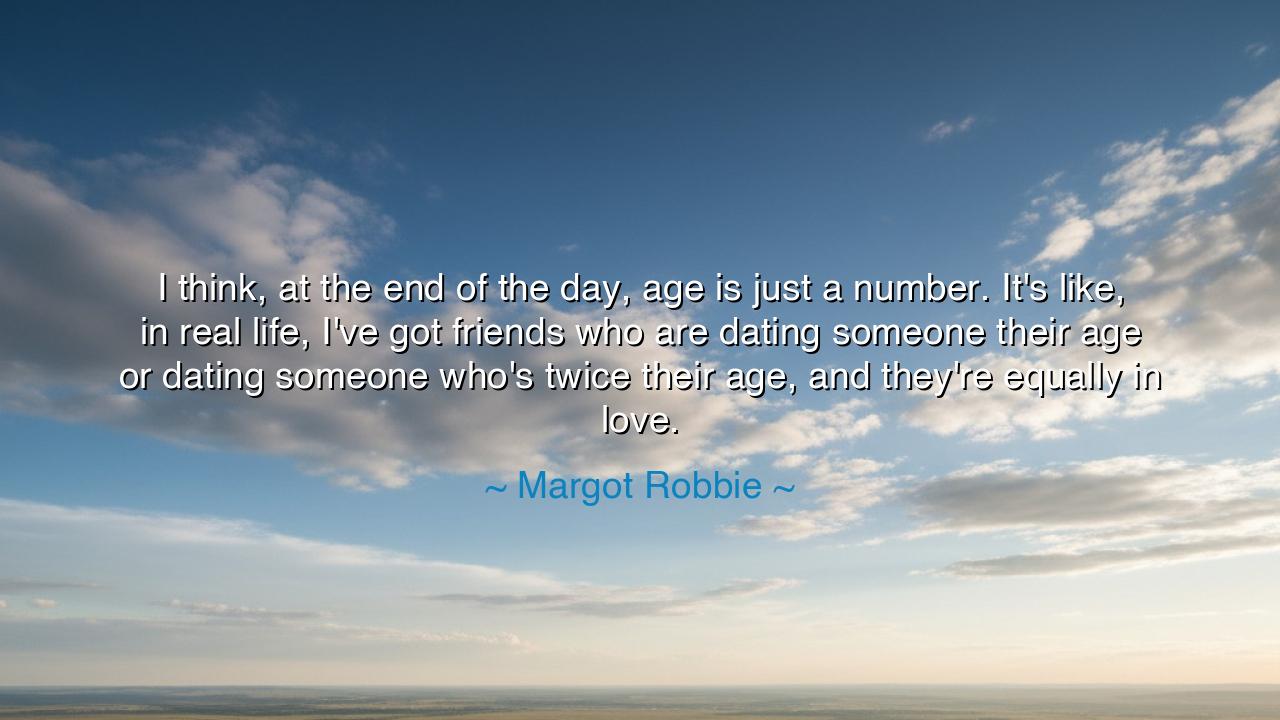
I think, at the end of the day, age is just a number. It's like
I think, at the end of the day, age is just a number. It's like, in real life, I've got friends who are dating someone their age or dating someone who's twice their age, and they're equally in love.






In the hush that follows the clamor of a day, a simple saying rings like a bell at dusk: “At the end of the day, age is just a number… in real life… some are dating their peers, others someone twice their age, and they are equally in love.” Hear the wisdom beneath its ease. The world embosses tallies upon our years, but the heart keeps a separate ledger, written in wonder, patience, and the brave exchange of selves. What counts in the secret arithmetic of devotion is not the number but the nourishment—how two spirits feed one another’s courage, how two hands steady the same dream.
The ancients would have understood. They measured unions by the harmony of purpose, not the symmetry of calendars. To call age a number is not to deny time, but to refuse its tyranny over tenderness. Time teaches; it does not rule. One may be young in years yet old in kindness, or old in winters yet young in hope. Love weighs these things on subtler scales, finding its true measure in the willingness to listen, to learn, to labor for the other’s flourishing.
Consider the poet’s boy from Stratford, William Shakespeare, who wed Anne Hathaway—he, eighteen; she, twenty-six. By custom’s reckoning, the gap was notable; by the heart’s reckoning, the question was different: could their shared life carry the freight of hardship and ambition? History answers that from this imperfect ledger sprang a genius who studied the human soul until it spoke in ten thousand tongues. Their ages were uneven; their vow was one. The number did not compose the sonnets—their entwined endurance did.
Or look to the gallery where Georgia O’Keeffe and Alfred Stieglitz hang in quiet dialogue. She was the flame ascending; he, decades older, was the wind that taught the flame to lean and leap. Between them stretched a difference of years, yes, but also a bridge of seeing: he revealed her to the world, she revealed the world to itself. Were they immune to storm? By no means. Yet their love kept inventing new weather in which both could breathe. Here, again, the ledger of age is poor; the balance sheet of devotion is rich.
None of this sanctifies foolishness. A wide span of years can magnify power or hide harm; wisdom must keep watch. But when good faith, mutual growth, and reciprocal care are present, the variance of birthdays becomes a mild road sign, not a border wall. The heart’s task is not to match numbers but to match virtues—honor with honor, curiosity with curiosity, courage with courage—so that two travelers, differently dated, walk the same horizon.
Take from this the lesson the elders pass down: Let love be judged by its fruits, not its figures. Ask: Does this bond make us kinder to strangers? Truer to our word? Braver in our craft? If yes, bless it; if not, no number can save it. Remember that the tree is known by the shade it casts at noon and the shelter it gives in storm, not by the rings you count after it has fallen.
And here are rites for the road. (1) When dating, read the character before the candles: seek patterns of keeping promises, not patterns of keeping time. (2) Name three ways you and your beloved help one another grow, and tend them as daily practices. (3) Invite counsel from those who love you, then weigh it with your own clear seeing—wisdom is the chorus that steadies the solo. (4) When others stare at the number, answer with the work: show the patience you cultivate, the trust you guard, the joy you steward together. Thus will you prove, by the oldest arithmetic of the heart, that age is indeed a number, and that two souls of unequal winters can be equally in love.






AAdministratorAdministrator
Welcome, honored guests. Please leave a comment, we will respond soon